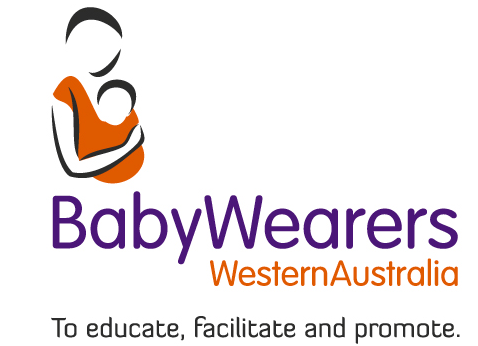As we’re nearing the end of Healthy Hips Week Australia 2021, let’s discuss the importance of an optimally fitted carrier and other safety considerations.
The Hips of an Infant
The skeleton of a newborn is mostly still cartilage (partially ossified) with underdeveloped hip sockets where the head of the femur has not yet settled into its adult position. Weaker muscles and bones that are not yet ossified signify an importance to support an infant’s preferred natural position of the seated-squat/squat-straddle. This position is that of the knees drawn up and in towards the navel, with the lower legs dangling free, so that the femur head can seat deeply into the hip sockets. As the baby grows, the assumption of this position changes with a widening of the knees so that the legs are not so closely pulled inwards to the navel. It is important to support this “optimal position” at all stages of infancy in order to aid appropriate hip development.
Developmental Dysplasia of the Hip
Hip dysplasia in infants is described as the hip socket and head of the femur (the top of the thighbone) not fitting together appropriately and it can range in severity, from slight misalignment to dislocation (the femur head comes out of the hip socket). It does not present only at birth but can “develop” within the first few months after birth, which is why it is called Developmental Dysplasia of the Hip (DDH) when it refers to infants. The cause of DDH is not known but there are risk factors which may contribute to the development of DDH:
a family history of DDH
gender (girls are two to four times more likely to develop DDH)
first born babies (because the uterus is tighter than in later pregnancies)
breech position during pregnancy, especially during birth
babies born over 4kgs
tight swaddling with legs extended
Treatment for DDH varies but will always focus on restoring the hips to the natural and correct position of the joint. This can be through surgery and/or use of a brace. There are a number of different types of braces available, all of which hold the baby’s legs and hips in a position to more deeply seat the femur head and aid healthy hip development. Treatment is optimised when diagnosis occurs within the first 3 months of life.
Optimal Carriers
An optimal carrier is one which supports baby’s thighs and hips (from knee-to-knee) in the natural position seated-squat position. In this position, baby is better able to move and adjust their own straddle which in turn helps to strengthen muscles and aid development.
Characteristics of an optimal carrier:
adjustable base of panel to support baby from knee-to-knee at different stages of growth, with the knees higher than the bottom allowing for the spine to curve
adjustable panel height to support baby’s neck at different stages of growth
side straps that connect to the waistband of the carrier rather than mid-panel; this prevents an inversion of the spine (if the straps are tightened too much) which can cause the femur head to move to a shallow position in the hip socket
Note: a carrier that does not follow these characteristics is not likely to cause hip dysplasia nor is it damaging to use if there are no risks or definite hips issues identified. It is not ideal to use a narrow-based carrier for a baby identified with hip issues.
Babies should be fitted in a carrier with their feet out of the carrier and their lower legs should be allowed to hang freely with the carrier resting at the kneepad. This prevents upward pressure on the ankles and avoids stimulating the stepping reflex (present during birth in response to a contracting uterus) where baby tries to “stand” out of the carrier.
In appropriate cases (and under professional care), an optimal carrier may be used in place of a harness to maintain hip position in babies that have been diagnosed with DDH. However, this should be reviewed case by case by your specialist.
More information about DDH can be found at Healthy Hips Australia.
Disclaimer: This information is intended to support discussion with your doctor or healthcare professionals and not replace it. Every effort is made to ensure this information is up to date, accurate and easy to understand. Baby Wearers Western Australia Incorporated does not accept responsibility for any inaccuracies or information perceived as misleading.


